TSHD - Cloned Gyro
Cloned Gyro System Definition
The underlying design of QINSy does not allow, for example, using different gyros and motion reference units for different computations on the same object. Nor is it possible to use a gyro system defined on one object to orient a second object when the second object is restrained to have the same heading as the first object.
As a remedy the System Cloner driver is used to duplicate certain system types without the need to physically split their interface channel (e.g. serial port). Essentially the driver copies the observation information from the original driver and makes it available to the rest of the system as if it was a separate observation.
In the case of a trailing suction hopper dredger, it may be permissible to assume the heading of the upper and lower suction pipes and/or the dredge head is the same as the vessel itself, though in many cases this is not a correct assumption.
This section describes how a gyro heading is cloned in the event that a dredge head and/or lower pipe are deemed to have the same heading as the vessel. The upper pipe will rarely have the same heading.
Refer to TSHD - Positioning Dredge Heads for more information on the positioning of the trailing arm sections and the dredge head.


The opening dialog of the System wizard looks like this:
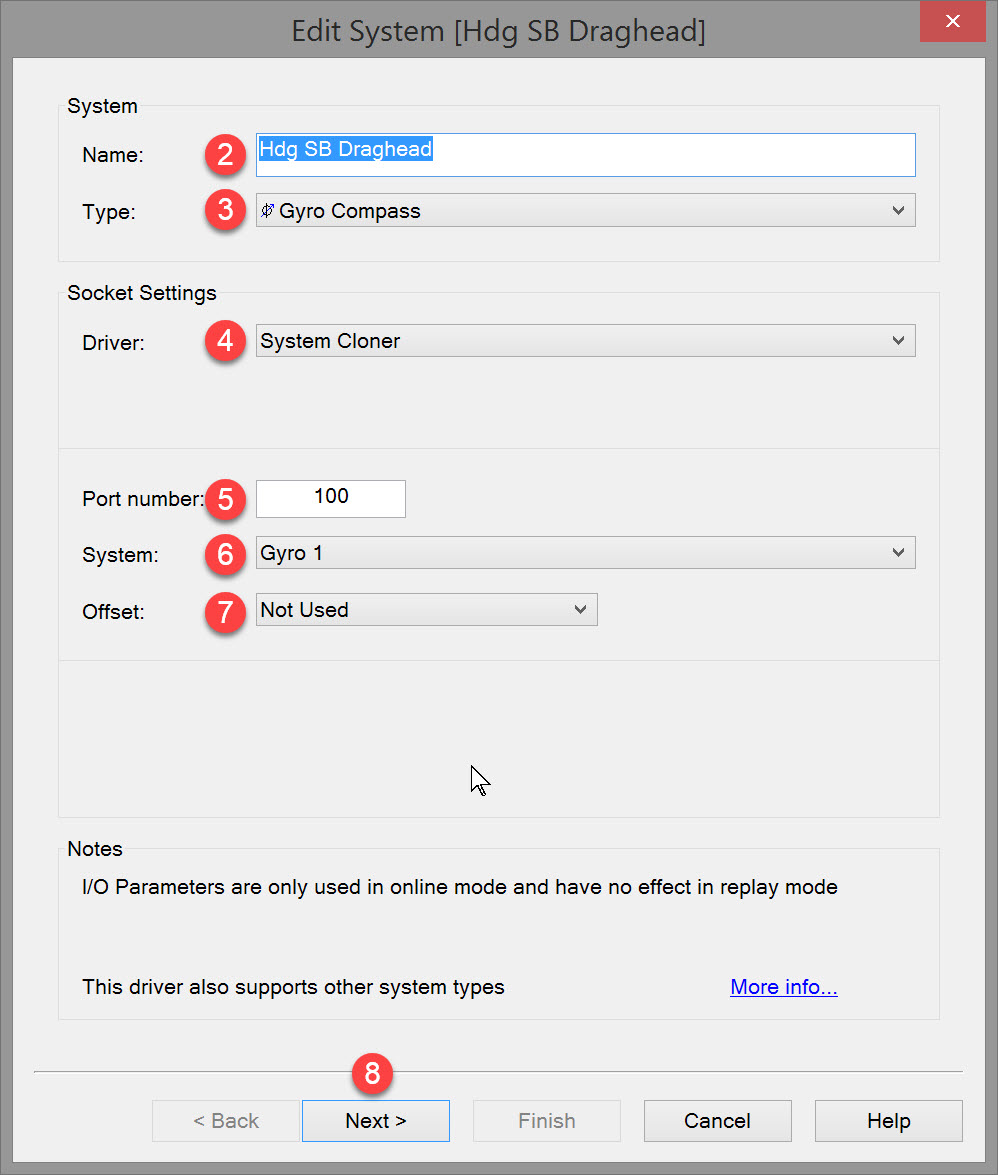



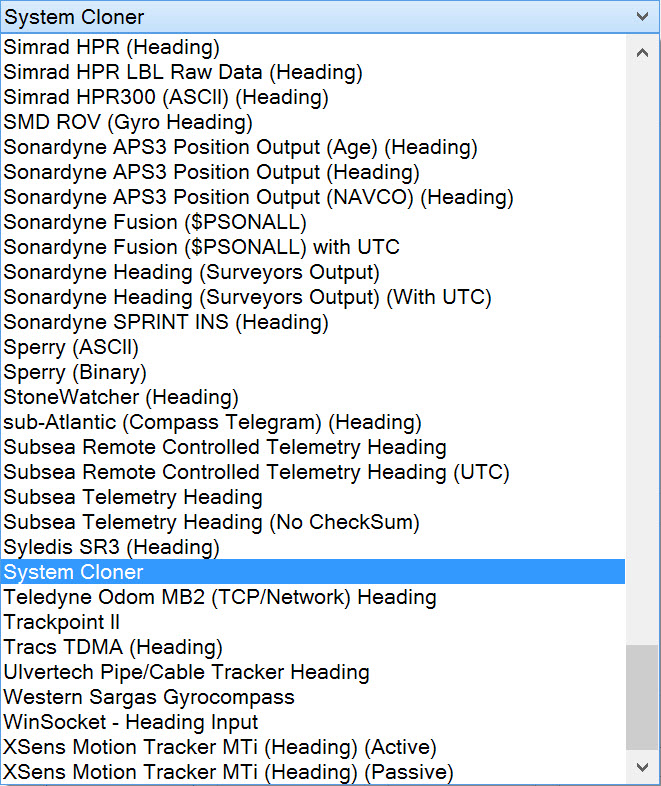

It does not matter what the number is as long as it is unique. If there are multiple cloned gyros, use a different port number for each one.

All the sensor systems defined to date in the template database are listed. In the example these are:
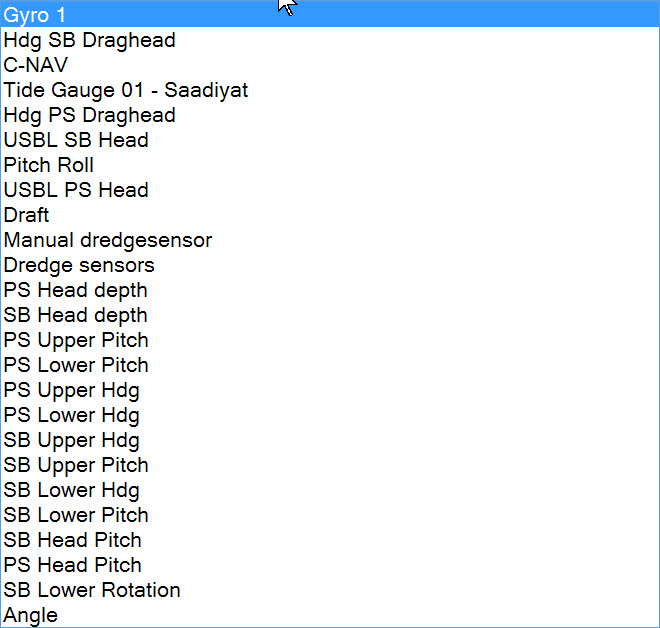

Select the system that will provide the offset value. This system must be of the same type.
All the sensor systems defined to date in the template database are listed. In the example these are:
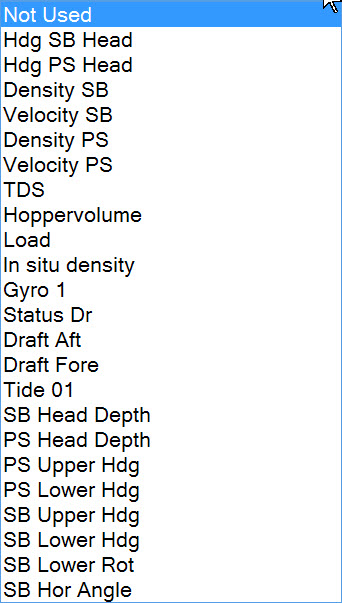
For a gyro, the offset system might be a gyro with manual input. Such a system allows for a constant rotation of object 2 in relation to object 1.

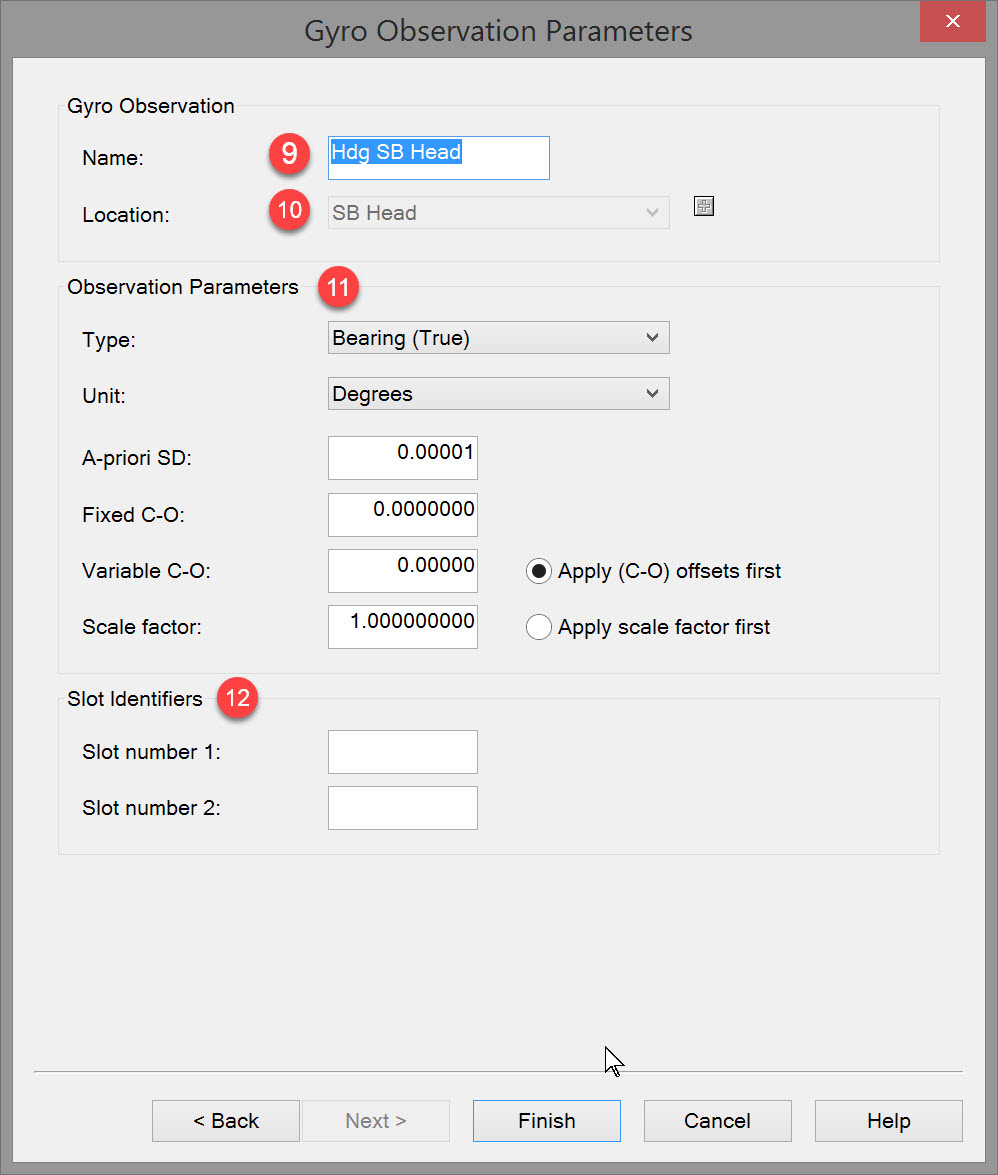



| Observation Parameters | |
|---|---|
| Type | Select Bearing (True), only option. |
| Unit | Select the type of units the gyro is outputting. This should be the same as for the primary gyro located on the pontoon. |
| A-priori SD | Enter the a-priori SD value of the gyro. Usually the default value is acceptable. |
| Fixed C-O | Enter fixed C-O correction. Fixed (C-O) corrections do not vary over time or location and must be recorded in the same measurement unit as the observation they refer to. |
| Variable C-O | Enter Variable C-O. The value for the Calculated minus Observed correction you enter will be added to the raw observation value. |
| Scale factor | The Scale Factor or Calculated divided by Observed correction should correct the raw observation measurement unit to the standard measurement unit. |

In this case no slot number is required as the original gyro observation for the TSHD had none. So these fields can be left blank.

Return to top of page.
Return to: Trailing Suction Hopper Dredger (TSHD) - System Definitions
